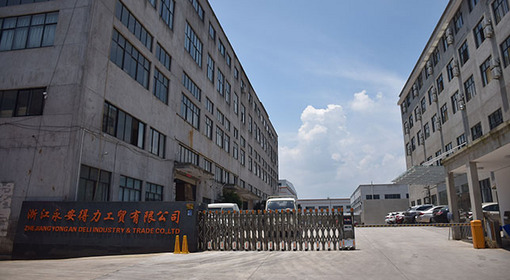6063-T5 aluminum tube 6063T5 aluminum tube chemical composition 6063-T5 aluminum tube 6063T5 aluminum tube chemical composition
Like most aluminum ladder manufacturers in mainland China, Zhejiang Yongkang Yongan Deli Industry & Trade Co., Ltd. uses aluminum-magnesium-silicon alloy 6063T5 anodized silver oxide, the original color is silver-white.
7XXX series are aluminum magnesium zinc copper alloys, commonly used brands are 7075, 7050, 7475, 7005, etc.
6XXX is an aluminum-magnesium-silicon alloy. Commonly used grades are: 6061, 6063, 6082, etc.
5XXX series are aluminum-magnesium alloys. Commonly used grades are: 5052, 5083, 5056, 5086, etc.
2XXX is an aluminum-magnesium alloy. Commonly used grades are: 2024, 2017, 2A12, 2014, etc.
1XXX is an aluminum-magnesium alloy. Commonly used grades are: 1050, 1100, 1060, 1090, etc.
Aluminum alloy is one of the most widely used non-ferrous metal structural materials in the industry and has been widely used in aviation, aerospace, automotive, machinery manufacturing, marine and chemical industries. With the rapid development of science and technology and industrial economy in recent years, the demand for aluminum alloy welded structural parts is increasing, and the research on the weldability of aluminum alloys is also deepened. The wide application of aluminum alloy promotes the development of aluminum alloy welding technology, and the development of welding technology has expanded the application field of aluminum alloy. Therefore, the welding technology of aluminum alloy is becoming one of the research hotspots.
Pure aluminum has a low density (ρ=2.7g/cm3), about 1/3 of iron, and has a low melting point (660°C). Aluminum is a face-centered cubic structure, so it has a high plasticity (δ: 32~40%, ψ: 70~90%), easy to process, can be made into various profiles and plates. Good corrosion resistance; but the strength of pure aluminum is very low, and the annealing state σb value is about 8kgf/mm2, so it is not suitable for structural materials. Through long-term production practices and scientific experiments, people gradually strengthened aluminum by adding alloying elements and applying heat treatment, which resulted in a series of aluminum alloys. The alloy formed by adding certain elements can have higher strength while maintaining the advantages of pure aluminum, and the σb value can reach 24 to 60 kgf/mm2, respectively. This makes its "specific strength" (ratio of strength to specific gravity σb / ρ) better than many alloy steels, becoming an ideal structural material, widely used in machinery manufacturing, transportation machinery, power machinery and aviation industry, aircraft fuselage , skins, compressors, etc. are often made of aluminum alloy to reduce their own weight. The use of aluminum alloy instead of steel plate welding can reduce the structural weight by more than 50%.
The aluminum alloy has low density, but high strength, close to or exceeds high-quality steel, good plasticity, can be processed into various profiles, has excellent electrical conductivity, thermal conductivity and corrosion resistance. It is widely used in industry and is used second only to steel. .
Aluminum alloy is divided into two categories: cast aluminum alloy, used in the as-cast state; deformed aluminum alloy, can withstand pressure processing. It can be processed into aluminum alloy materials of various shapes and specifications. Mainly used in the manufacture of aviation equipment, building doors and windows.
The aluminum alloy can be divided into a deformed aluminum alloy and a cast aluminum alloy according to the processing method. The deformed aluminum alloy is further divided into a non-heat treatable reinforced aluminum alloy and a heat treatable reinforced aluminum alloy. The non-heat-treated reinforced type cannot be mechanically improved by heat treatment, and can only be strengthened by cold working deformation. It mainly includes high-purity aluminum, industrial high-purity aluminum, industrial pure aluminum, and rust-proof aluminum. Heat-treated reinforced aluminum alloy can improve mechanical properties by heat treatment such as quenching and aging. It can be divided into hard aluminum, wrought aluminum, super-hard aluminum and special aluminum alloy.
Maintenance and maintenance of aluminum alloys:
Aluminum profile products have the characteristics of high strength, light weight, strong corrosion resistance, novel structure, convenient assembly, material saving and durability. The unreasonable maintenance, installation and maintenance will also affect the appearance of aluminum profiles. The color of the surface. Jin Zida advises you to have proper maintenance and maintenance methods.
1. During the handling of the aluminum profile, it must be handled gently, to prevent the surface from being scratched and affecting the appearance of the surface;
2. During the transportation process, the aluminum profile must be covered with a crepe cloth to prevent the intrusion of rain and snow;
3. The storage environment of aluminum profiles should be dry, bright, well ventilated, non-corrosive climate, and should be protected from rain, water and snow;
4. When the aluminum profile is stored, Jinzhida recommends that you can put it on the shelf in small size. The storage method of large-size aluminum thick plate is best separated from the ground by the bottom of the block, keeping the distance from the ground more than 10CM; large-size material When stacked together, Jin Zida advises that it is best to use materials such as wood strips/wood boards to space them up and down;
5. When storing aluminum profiles, it is strictly forbidden to store them together with chemical materials and moist materials.
- Vorige: Telescopic ladder
- De volgende: Nee

